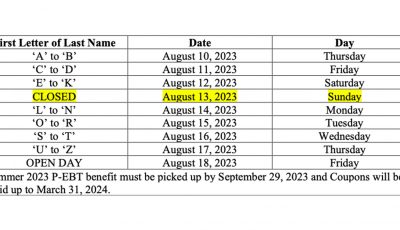NAP recipients similar to 2009 level
Nutrition Assistance Program administrator Walter Macaranas said the recent number of food stamp recipients in the Commonwealth is almost the same level as seven years ago. NAP administers the food stamp program and Macaranas said the decline in the number of households under the program has been buoyed by the recent economic growth in the CNMI.
Macaranas said they are assuming people under the program are getting employed with several business establishments opening this year. “We take this as an assumption that there are jobs out there and our people are getting employed.”
Though no data was given on how many households have been receiving food stamps in 2009, Macaranas said they saw the decline in numbers starting four years ago. “We have realized a decline since 2012. The level right now that we are at is the same level we were at in 2009.”
“The average household cases in 2012 were 3,662 and the numbers right now as of June 2016, there are 2,715. There is a rise and then there is a drop. Right now, there’s been a decline since 2012,” added Macaranas.
He said that they expect the numbers to still decline unless the guidelines would change, which would open up the door for more people to qualify.
“We do also have our minimum wage increase going up so our guidelines do not complement that. Our guidelines remain the same, which means that people are leaving the program because they don’t meet the guidelines to qualify,” said Macaranas.
He added that their budget would remain the same for the coming fiscal year. “It is not going to go down, although the participation is declining we’re going to have the same funding amount. We’re going to maintain our funding level at $12 million.”
Last week, Macaranas revealed that at least 31 individuals were disqualified from receiving food stamps after failing to comply with workforce participation requirements. Those that were disqualified were part of NAP’s progressive disqualification program implemented this year.
NAP has partnered with local agencies like the Northern Marianas Trades Institute and the Workforce Investment Agency to assist recipients in work training and finding jobs. Recipients must comply with work registration, education, and training requirements
Failure to do so would disqualify a recipient for three months in first offense. A second offense would disqualify you for six months and a third offense means permanent disqualification.
Teaming up with the likes of NMTI and WIA is part of the government’s efforts to have more people join the local workforce with the CNMI’s economy slowly improving after years of slump.
The administration wants people under the program to not totally depend on food stamps if they are still able to work and there are employment opportunities.



























